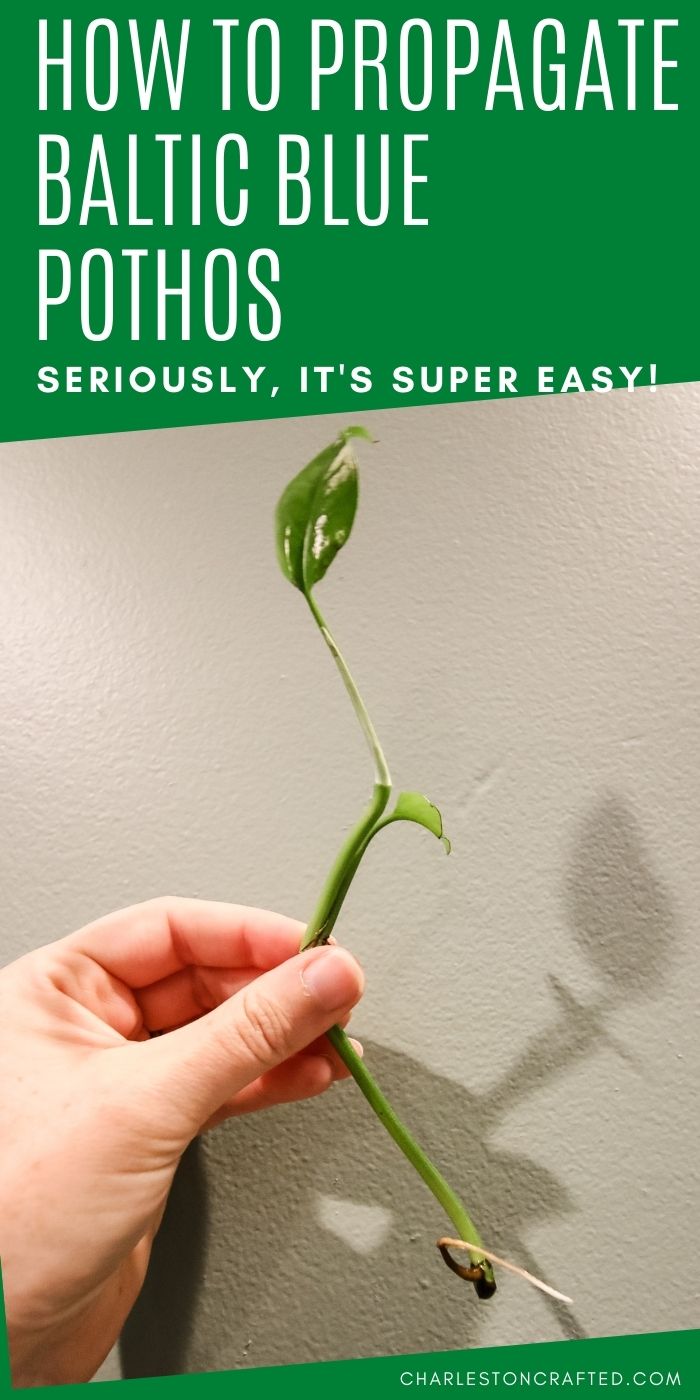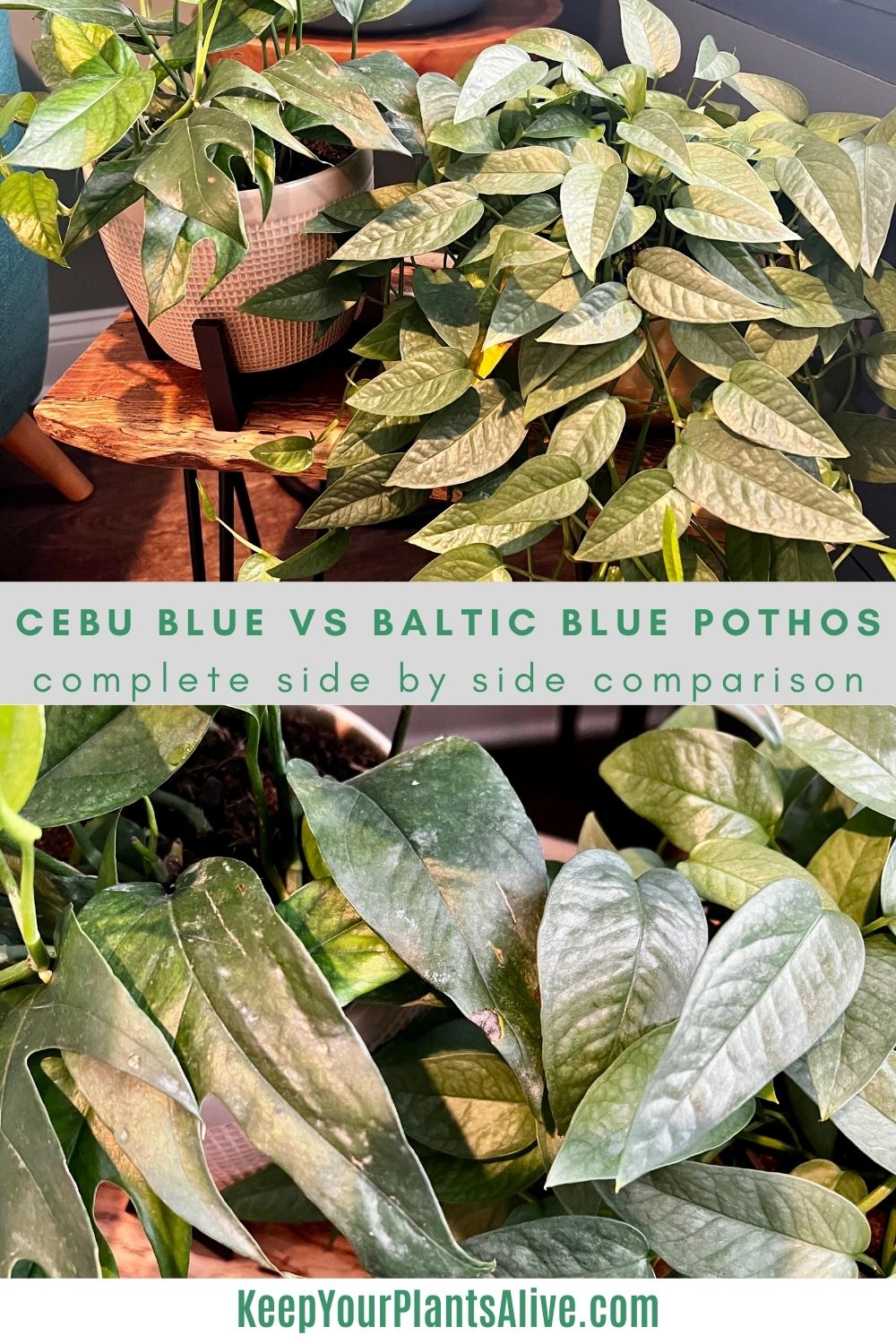Want to add a Baltic Blue Pothos to your houseplant collection? They are beautiful and easy to care for! Here's my complete Baltic Blue Pothos care guide!
Love pothos plants? I don't blame you - I do too. They are easy going, beginner friendly plants. They propagate easily and grow quickly - making them a great addition to any home!
Other pothos content you might enjoy:
- Golden pothos care guide
- Cebu Blue pothos care guide
- Baltic Blue pothos care guide
- Marble Queen pothos care guide
- Global Green pothos care guide
- Neon pothos care guide
- NJoy Pothos Care Guide
- Why are my pothos leaves turning yellow?
- Why are my pothos leaves turning brown?
- Why is my pothos plant not growing leaves?
- Why are my pothos cuttings rotting
- How to move pothos from water to soil
- Should I mist my pothos?
- How to make pothos fuller
- Can you propagate pothos without a leaf?
- Can you propagate pothos from a leaf?
- Can you propagate a long pothos vine?
- Where to cut pothos for propagation
- Pothos vs Snake plants: which is better for beginners?
- Cebu Blue Pothos vs Baltic Blue Pothos
- How to propagate pothos
- How to propagate golden pothos
- How to propagate a satin pothos
- How to propagate pothos in soil
- How often to water pothos plants
- How to care for variegated pothos
- How to revive a dying pothos plant
- Why are my Pothos leaves curling?
- How to identify and treat common pothos pests
- How to divide pothos plant
- How to make pothos grow bigger leaves
- Why does my pothos only have one vine?
- Can you grow pothos in low light conditions?
- How to cut off dead pothos leaves
- Are pothos plants toxic to cats and dogs?
- Can you grow pothos in water?
- Why is my pothos droopy?
- Why is my pothos plant dropping leaves?
Printable Pothos Plant Care Guide
Join the (free!) KeepYourPlantsAlive+ community to access this exclusive printable plant care guide! Or keep scrolling for more!
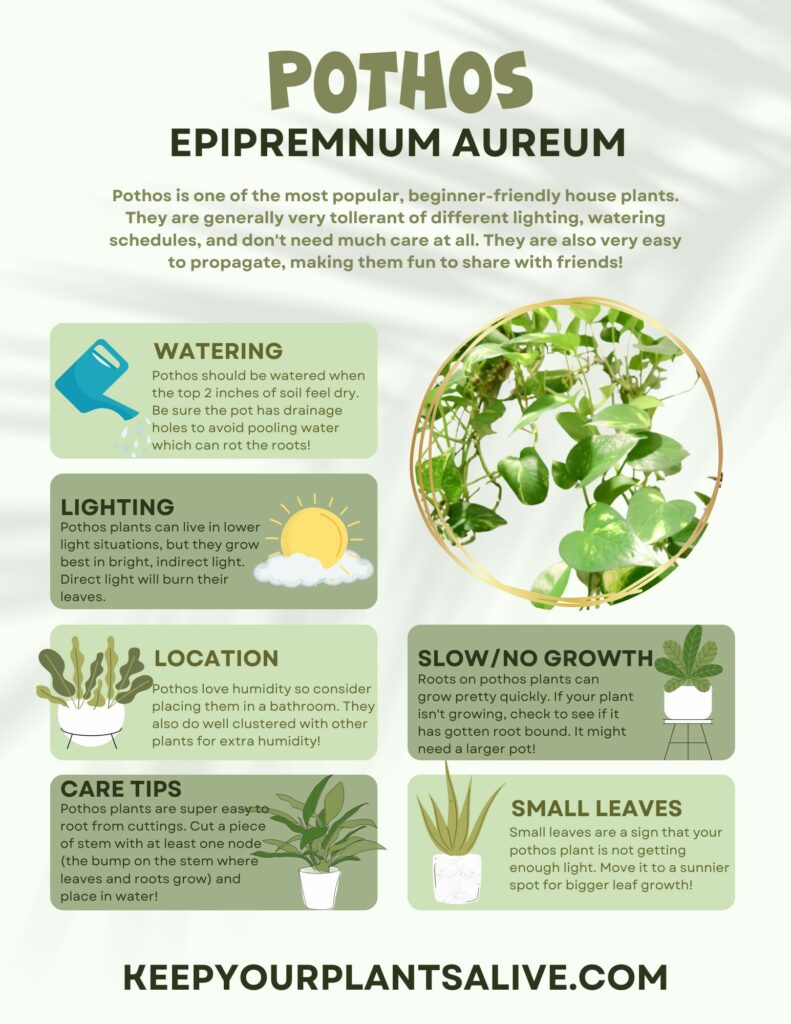
Today I want to chat about my newest pothos plant - the baltic blue pothos!
Printable Baltic Blue Pothos Care Guide
Join the (free!) KeepYourPlantsAlive+ community to access this exclusive printable plant care guide! Once you sign up, you can right click & save the JPG care guide. Or keep scrolling for more!
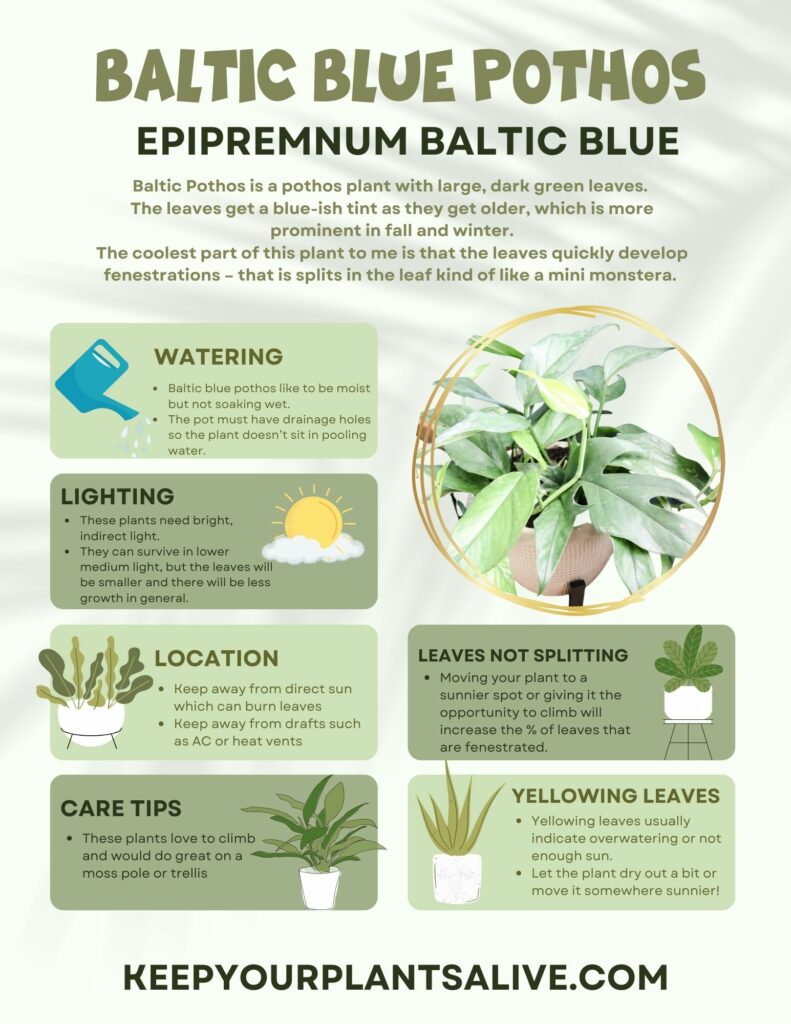
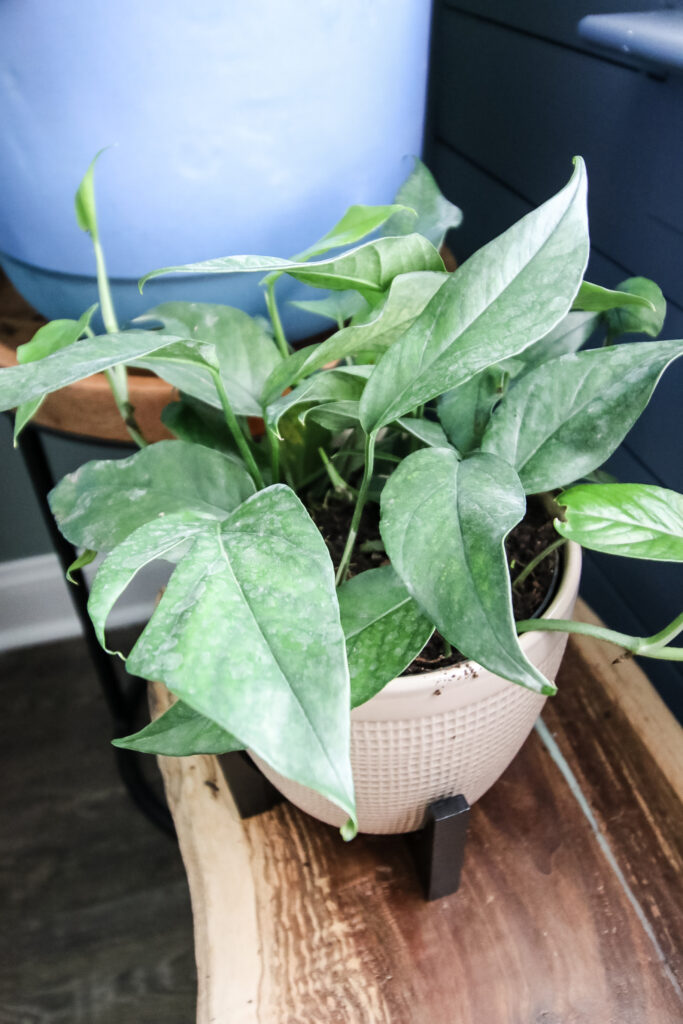
What is baltic blue pothos?
Baltic Pothos is a pothos plant with large, dark green leaves. The leaves get a blue-ish tint as they get older, which is more prominent in fall and winter.
The coolest part of this plant to me is that the leaves quickly develop fenestrations - that is splits in the leaf kind of like a mini monstera. They differ from swiss cheese plant "window" style fenestrations and are more splits in the leaf.
Baltic Blue pothos is also known as:
- Epipremnum baltic blue
Baltic Blue Pothos origins
The Baltic Blue pothos was created by Costa Farms for their 2022 trending topicals collection. It is a clone of Epipremnum pinnatum.
Is baltic blue pothos rare?
I bought my baltic blue at Costco for $13.99, so I don't think it is rare any more! Find them anywhere that Costa Farms trending tropicals plants are sold!
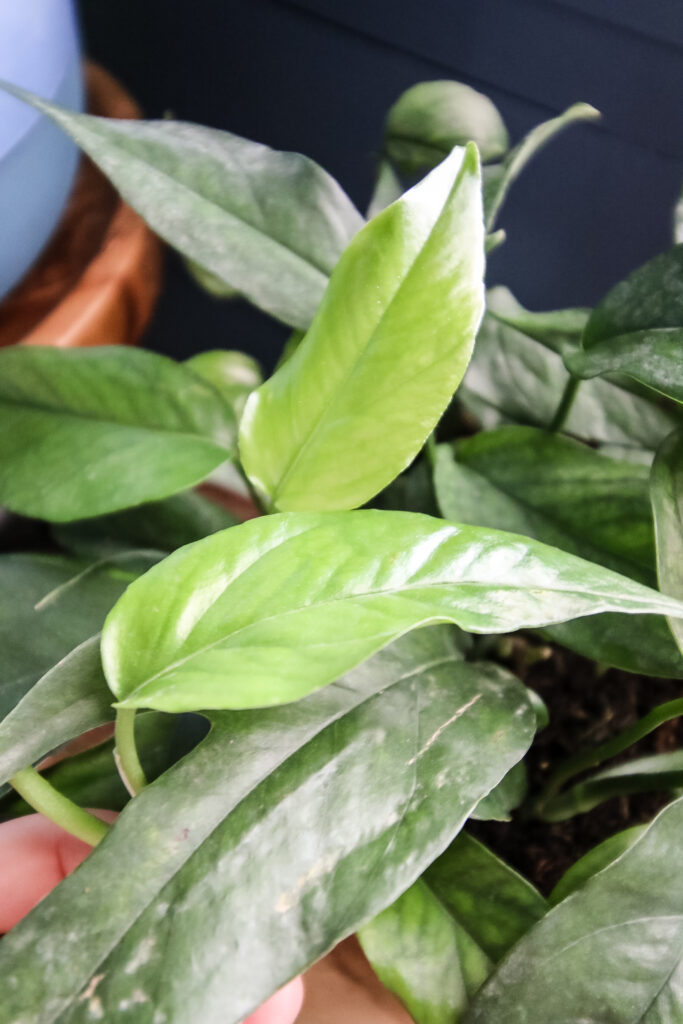
Is baltic blue pothos toxic?
Yes - all pothos plants are toxic if eaten by humans or pets. Keep them away from curious mouths!
Is Baltic Blue pothos the same as Cebu Blue?
No - Baltic Blue and Cebu Blue pothos are different plants. They are both types of pothos, but they are different pothos varieties.

In general, baltic blue pothos has larger leaves that fenestrate much sooner and easier compared to cebu blue.
Cebu Blue pothos has more of a silver tint to its leaves and the leaves have more of a scaly or bumpy texture.
See my full comparison of Cebu Blue Pothos vs Baltic Blue Pothos
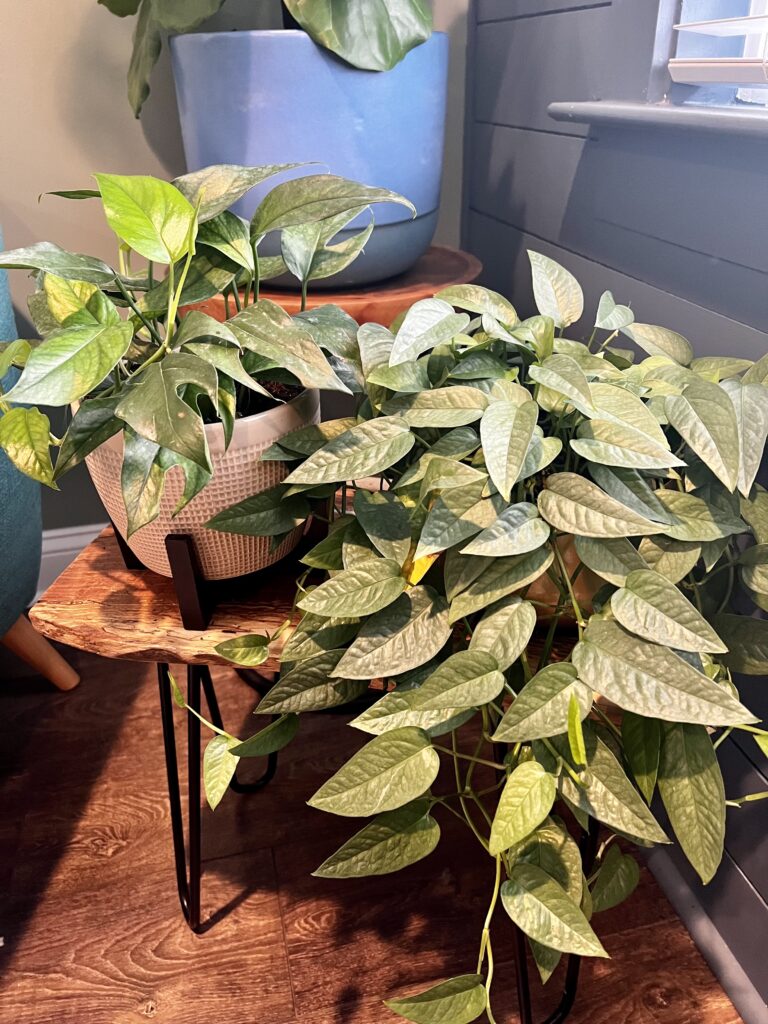
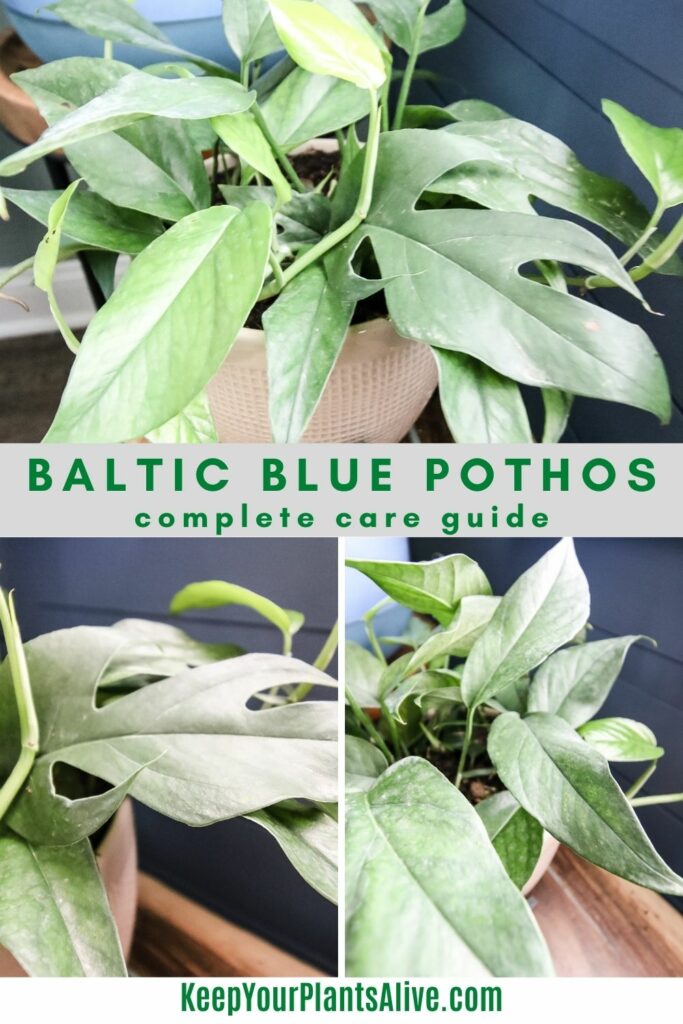
What are the benefits of baltic blue pothos?
The benefits of having a Baltic Blue Pothos plant in your home include:
- improving indoor air quality
- reducing stress levels
- adding aesthetic value to your space
Baltic blue pothos care guide
Baltic blue pothos are easy to care for houseplants, just like most pothos varieties!
Baltic blue pothos watering
Baltic blue pothos like to be moist but not soaking wet. The most important thing is that the pot have drainage holes so the plant doesn't sit in pooling water - that can lead to root rot and death of the plant.
Read my guide on drilling drainage holes in pots!
How often should I water my baltic blue?
Water your plant when the top 2 inches of the soil feel dry. This can be once a week or every 2 weeks, depending on how sunny and warm of a spot it's in and the size of your pot.
Should I mist my baltic blue plant?
Pothos like humidity but don't need super high humidity. You can mist them once a week or so. More won't hurt, but isn't totally necessary.
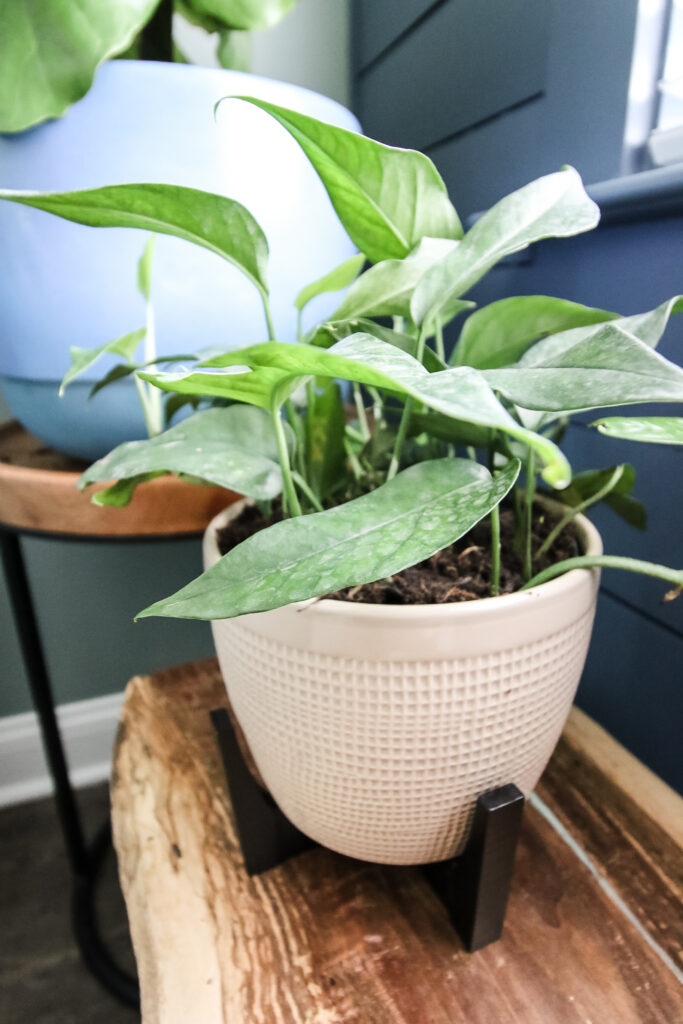
Baltic blue pothos lighting needs
These plants need bright, indirect light. They can survive in lower medium light, but the leaves will be smaller and there will be less growth in general.
Keep all pothos out of direct sunlight, which can burn their leaves.
Can I keep baltic blue pothos outdoors?
You can keep pothos outside as long as they are out of direct sunlight - like a hanging basket on a covered porch. I love them as bottom filler type plants in a pot with a tall tree!
Bring pothos indoors if the temperatures are dropping under 50 degrees consistently. They don't like the cold!
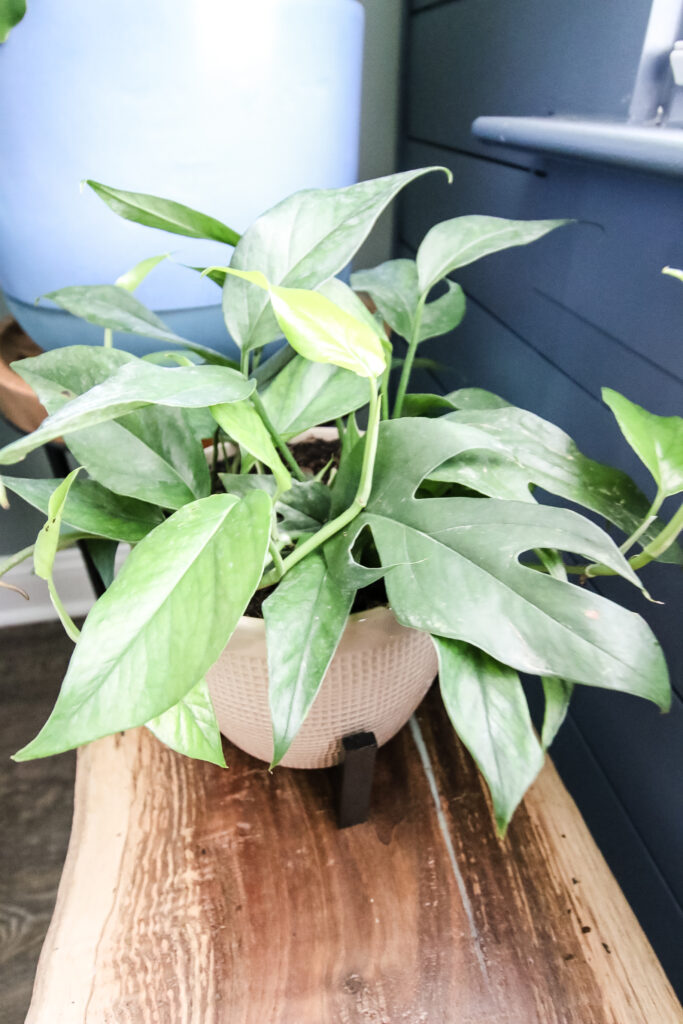
Ideal temperature range for a Baltic Blue Pothos
Baltic Blue Pothos cannot tolerate temperatures below 50 degrees, and do best in a temperature range of between 70 and 90°F.
Baltic blue pothos soil + potting
These plants need well draining soil - regular potting mix is fine.
A good potting mix for pothos plants usually contains a blend of peat moss, perlite or coarse sand, and vermiculite or coconut coir to ensure good drainage and aeration while also retaining moisture.
Does baltic blue pothos like to be root bound?
These plants will tolerate being a little root bound, but that will slow down their growth. Move them to a pot 1-2 inches larger every year or so for best results.

Does baltic blue pothos need a moss pole?
Baltic Blue pothos can be grown trailing or climbing. If you want them to climb, you can use a bamboo pole, a trellis, or a moss pole.
Here's my guide on how to make a pothos moss pole!
Baltic blue pothos fertilization
You can fertilize these plants twice a year with a general houseplant fertilizer. They'll eat it up!
Baltic Blue Pests and diseases
The most common pests and diseases that Baltic Blue Pothos can be susceptible to include spider mites, mealybugs, and root rot. Examine the underside of your leaves for webbing or stickiness, the most common signs of pests!
How to prune Baltic Blue Pothos
You can let your pothos plant grow wild or prune it. Pruning will encourage fuller, bushy growth. To prune the plant, simple snip any long, leggy stems. You can then propagate the cuttings!
How to propagate Baltic blue pothos
It is extremely easy to propagate baltic blue pothos in water.
- Identify a healthy branch, preferably with new growth
- Snip the branch with sharp scissors
- Remove any lower leaves
- Place in water so at least 1 - preferably 2 - nodes are underwater
- Change the water once a week and top off as necessary
- See roots form in 2-4 weeks
- Once the roots are 2-3 inches long, plant in soil
Here's my complete guide on how to propagate baltic blue pothos!
Troubleshooting Baltic blue pothos
Baltic Blue pothos are easy to care for plants, but they can have some problems. Here are some common ones!
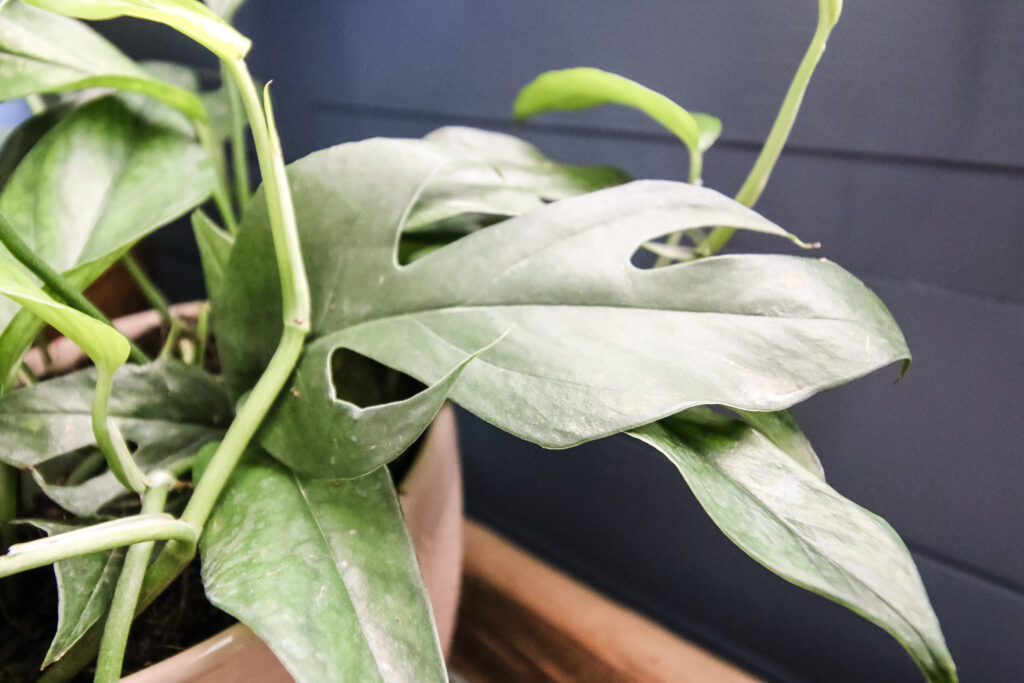
Why is my baltic blue pothos not fenestrating?
Unlike many other varieties of pothos, the baltic blue does not need to climb or bright light to fenestrate. New leaves grow already fenestrated sometimes!
However, moving your plant to a sunnier spot or giving it the opportunity to climb will increase the % of leaves that are fenestrated.
It helps to understand why leaves split to begin with. Pothos naturally grow in the rainforest up the trunks of trees. The green leaves want to get as much sun as possible through the overhead trees.
The best way to cover the most space - with the same amount of square inches of leave material - is by splitting the leaf. This helps the green foliage stretch further!
So, fenestrated pothos leaves are trying to soak up as much sun as possible! Let them climb a "tree" and reach bright light and they will split more for you!
How do you make baltic blue pothos bushier?
The best way to encourage thicker, bushier growth is by pruning your pothos. Cut off any long branches (and propagate them in water!) This will encourage new growth near the base of the plant.
Why are my baltic blue pothos leaves turning yellow?
Yellowing leaves usually indicate overwatering or not enough sun. Feel the soil - does it feel damp? Let the plant dry out a bit! If not, is it in a dark-ish spot? Move it somewhere sunnier!
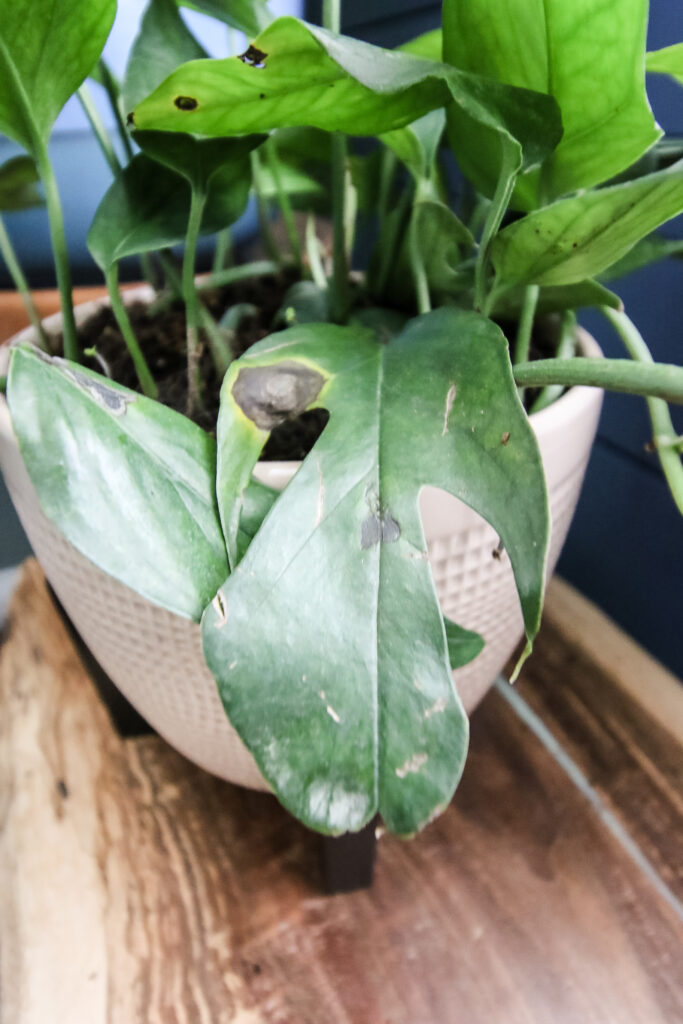
Why does my baltic blue pothos have brown spots?
Brown spots usually indicate under watering or lack of humidity. Try watering the plant deeper and misting it regularly.
You can cut off any dead leaves, they won't turn green again.
Brown spots can also be sunburn - if you recently moved it to a sunny spot, it might be too much for the delicate leaves!
Any more questions about the Baltic Blue Pothos plant?
Thanks for reading!


Hey there, I'm Morgan, a houseplant enthusiast from sunny Charleston, South Carolina. Growing up surrounded by my mom's lush orchids and African violets, I discovered the magic of bringing nature indoors. Thanks to the pandemic, I delved deeper into houseplants, discovering their power to uplift moods and transform spaces. I'm here to spill all my secrets, helping you pick the perfect houseplant - and make it happy. Let's keep your plants alive, together! 😊

